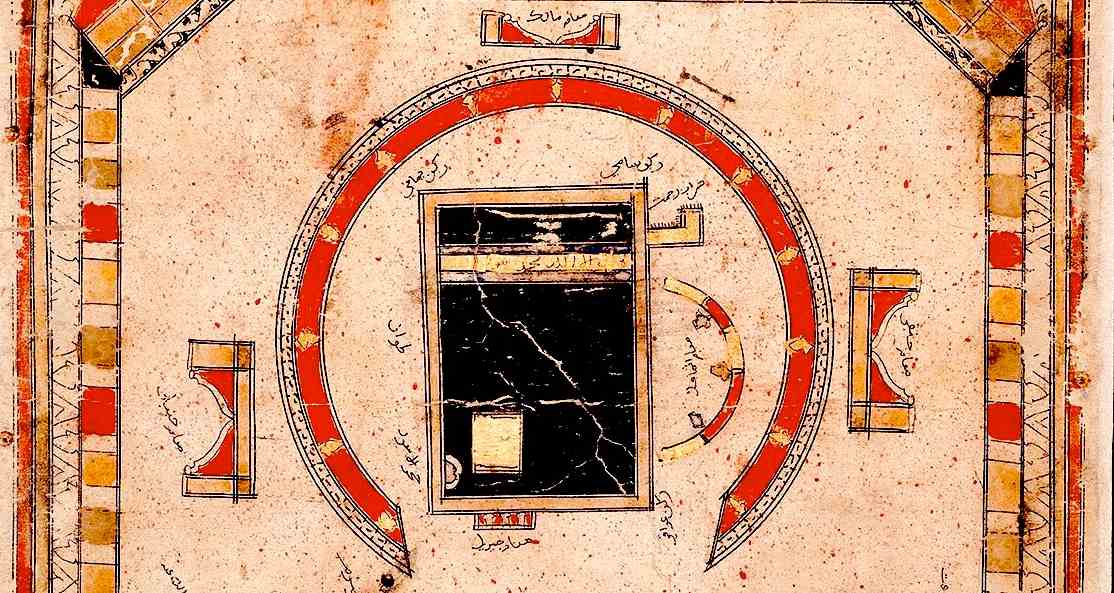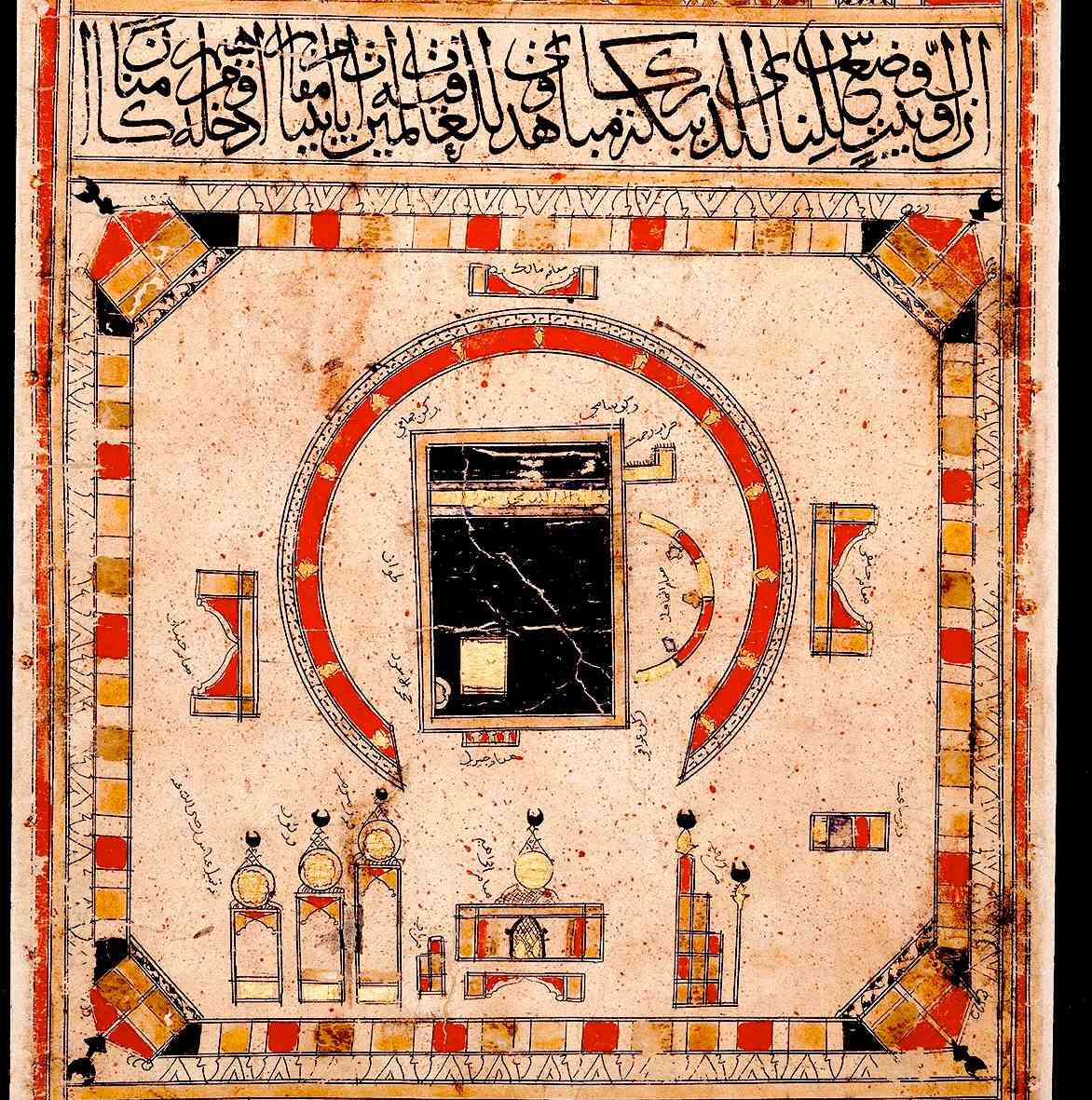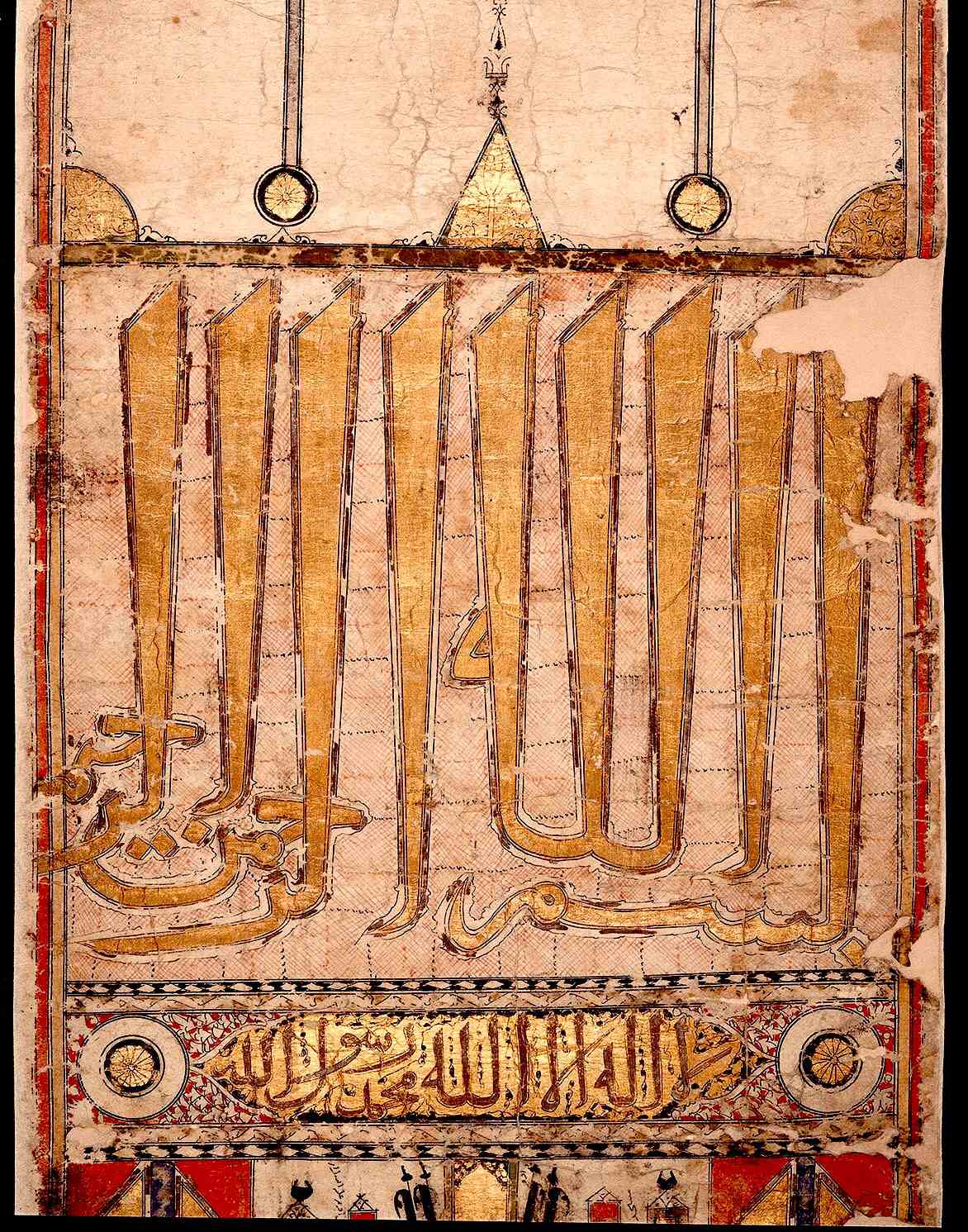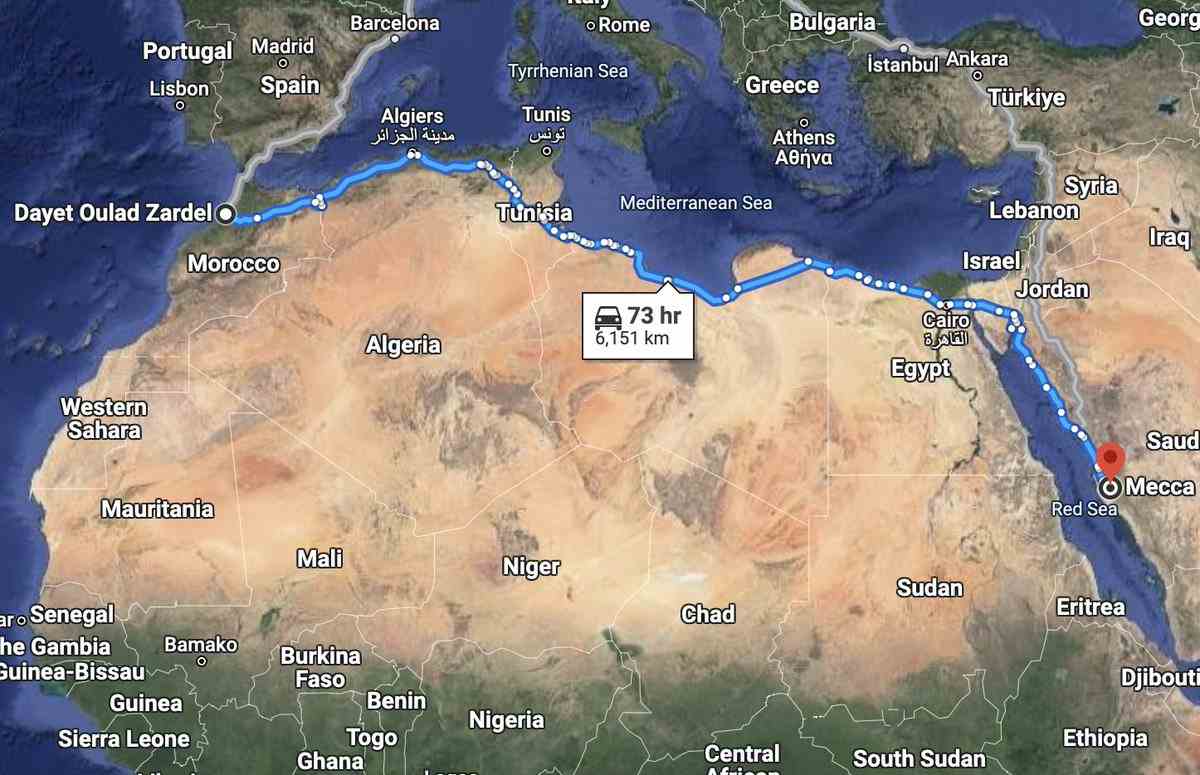A 15th-century Muslim woman's journey to Mecca

In 1433, a Muslim woman named Maymuna made her pilgrimage to Mecca and visited the tomb of the Prophet ﷺ.
This precious manuscript is her hajj certificate.
Richly illustrated, it shows key points on the pilgrimage — with the Masjid al-Haram and holy Ka’ba as its centerpiece.
Verses from the Qur'an appear in bold black calligraphy:
The first House [of worship] to be established for people was the one at Mecca. It is a blessed place; a source of guidance for all people; there are clear signs in it; it is the place where Abraham stood to pray; whoever enters it is safe. (3:96-7, tr. Abdel-Haleem)

Maymuna’s hajj certificate opens with a towering golden basmala - the Arabic invocation of the divine:
﷽
In the name of God, the Most Gracious, the Merciful.
Below that we see the traditional testimony of faith:
There is no god but God, and Muhammad is the messenger of God.

The history of hajj certificates
You may be wondering: what is a hajj certificate?
Below is an excerpt from the book Hajj: Global Interactions through Pilgrimage (open access).
Dr. Venetia Porter, curator of Islamic & Contemporary Middle East art at the British Museum, explains on p. 104-5:
Certificates, in the form of scrolls, that attest the performance of a named person on the Hajj or Umra ... are another important [type of] souvenir of pilgrimage. Many certificates are illustrated in the same two-dimensional, flat style of representation [used in the book] Futuh al-Haramayn. The earliest examples date to the 12th century and specify [in] text the precise actions that the pilgrim took at each of the stations of the Hajj. Some [hajj certificates] also include other holy sanctuaries, such as those in Jerusalem or, for the Shi‘a, Najaf and Kerbela.
A later chapter in the book (p. 186) adds:
The tradition of Hajj certificates [...] continued at least through the first half of the 20th century.
How far Maymuna traveled for her pilgrimage
So, for the hajj certificate above - where did Maymuna start her journey?
I'm not sure it's recorded, but we do know that Maymuna's father was Muhammad ibn ‘Abd Allah al-Zardali.
So he / his family seems to be from Zardal, Morocco, which is over 6,000 km from Mecca. That would be quite a trip!

